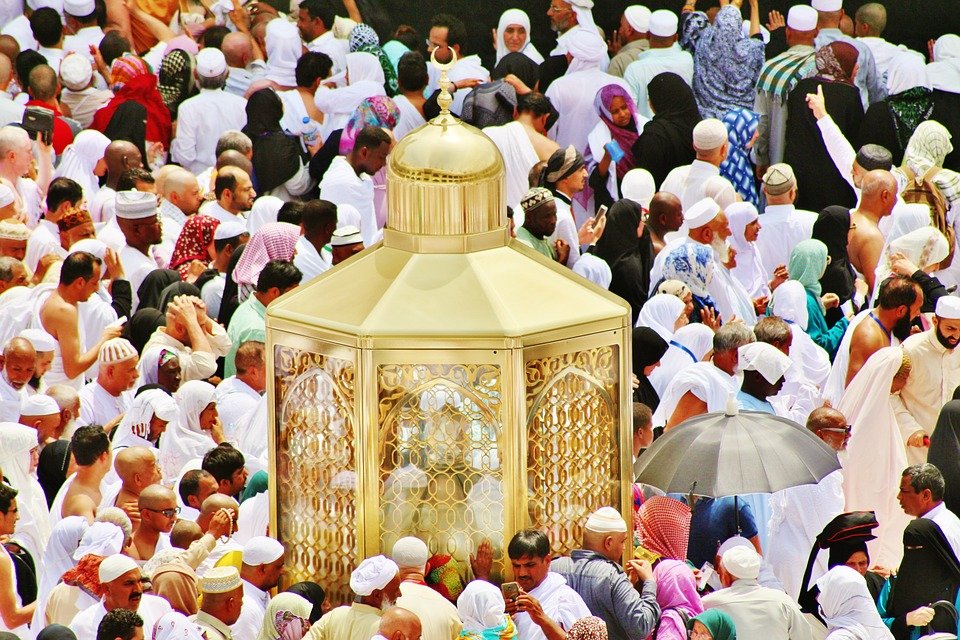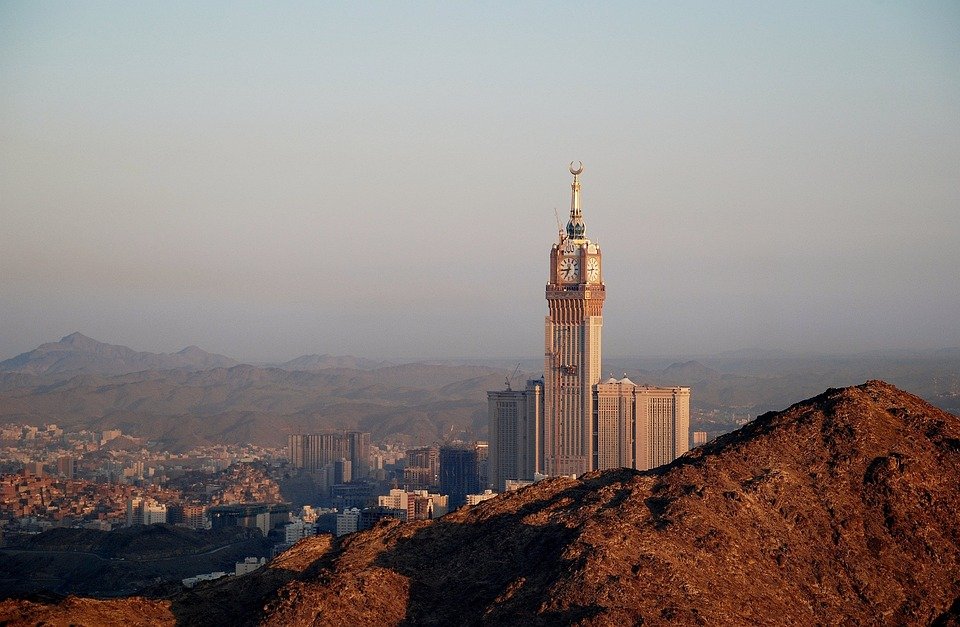You are here to read: Where Does the Hajj Start and End: A Complete Guide – A Thoughtfully Written Guide Offering Spiritual Wisdom and Travel Advice for Every Pilgrim who is going on holy journey of Hajj or Umrah.
When it comes to understanding “where does the Hajj start and end,” I believe clarity is essential. The Hajj is a pivotal pilgrimage for millions of Muslims worldwide, beginning in the sacred city of Makkah and concluding with significant rituals that further connect pilgrims to their faith. In this article, we provide a comprehensive guide that outlines both the starting and finishing points of this important spiritual experience, ensuring readers grasp the full scope of what Hajj entails.
The significance of knowing “where does the Hajj start and end” cannot be overstated. Understanding these points helps pilgrims prepare mentally and spiritually for the experience ahead. With our nine years of experience in the Umrah and Makkah, Madinah travel field since 2016, we have the expertise to offer valuable insights on this topic. I feel it’s crucial to walk alongside travelers as they engage with these vital milestones of Hajj, enhancing their overall spiritual experience. Together, we will explore the key elements that define this sacred pilgrimage.
Where Does the Hajj Start and End: A Complete Guide
Understanding Hajj: A Sacred Pilgrimage
Hajj is a vital spiritual journey that Muslims undertake at least once in their lifetime, provided they can afford it and are physically able. This pilgrimage brings together millions of people from around the world, united in faith and purpose. It takes place annually in the Islamic month of Dhu al-Hijjah. I believe this experience not only strengthens faith but also fosters a sense of community among participants.
The rituals of Hajj have deep roots in Islamic tradition, celebrating the acts of the Prophet Ibrahim and his family. This sacred pilgrimage invites pilgrims to perform a sequence of rituals that reflect devotion, humility, and submission to Allah. Traveling to Makkah, the holiest city in Islam, forms the heart of Hajj. But before pilgrims arrive in Makkah, they often start their journey from various points, depending on their location and circumstances.
The Starting Point: Makkah
Many Muslims begin their Hajj in Makkah, where the Kaaba stands at the center of the Masjid al-Haram. Pilgrims enter the sacred mosque with a mind full of prayers and intentions. Once there, they perform a series of rituals, including Tawaf, where they walk around the Kaaba seven times in a counterclockwise direction. This act, symbolizing unity with other worshippers and the oneness of Allah, ignites feelings of reverence and purpose within each pilgrim.
Makkah is not just a starting point; it’s a place filled with meaning. The atmosphere is charged with spirituality, as millions gather to pray and seek forgiveness. Each individual feels a deep connection to their faith, making the experience more powerful. From here, pilgrims then travel to other sacred sites as part of the Hajj rituals, but the essence of Makkah resonates throughout.
The Journey to Mina
After spending time in Makkah, pilgrims set out for Mina, a town just a few kilometers away. This short journey is filled with anticipation and excitement. Mina is significant within the Hajj because it serves as a place where pilgrims spend a night in prayer and reflection. On the 8th day of Dhu al-Hijjah, pilgrims travel in groups, each carrying their intentions and prayers as they make their way to this sacred site.
You're at the middle of this awesome post at AirlinkHajjandUmrah.com through: Where Does the Hajj Start and End: A Complete Guide. Keep reading, it gets better!
Mina is often described as a serene valley. As pilgrims arrive, they find tents set up to accommodate everyone. It’s incredible to witness the unity here; people from diverse backgrounds come together, sharing meals and stories. Many find comfort in this sense of community, knowing that they are not alone in their quest for spiritual enlightenment. The night spent in Mina prepares everyone for the series of crucial rituals that follow.
The Day of Arafah: A Soulful Ritual
The Day of Arafah takes place on the 9th of Dhu al-Hijjah and is considered the pinnacle of Hajj. On this day, all pilgrims head to the Plain of Arafah, where they stand in prayer, seeking forgiveness and mercy from Allah. This communal gathering is mesmerizing. I imagine the feeling of being surrounded by millions of fellow believers, all asking for guidance and strength.
During this day, the atmosphere is deeply reverent. As pilgrims raise their hands in prayer, there’s a profound sense of belonging. It’s a time for introspection, a chance to reevaluate one’s life and faith. I think this moment can change lives forever. The intensity of the experiences shared during Arafah creates bonds that last beyond the pilgrimage, imbuing a sense of brotherhood but also personal transformation.
The Rituals of Muzdalifah
Following the revelatory experience at Arafah, pilgrims head to Muzdalifah. Here, they spend the night under the stars, an experience that feels almost primal. Many take this time to gather pebbles that will later be used in the Stoning of the Devil ritual. This act symbolizes rejecting evil influences and reaffirming faith in Allah.
Muzdalifah serves as a pause before the next crucial rituals. As everyone settles under the open sky, there’s an opportunity to reflect on the day’s events and connect with fellow pilgrims. Sharing stories and experiences create a sense of camaraderie. This tranquil night allows many to find peace within themselves, and I think it fosters an atmosphere where spiritual bonds flourish.
The Significance of Mina Again
After Muzdalifah, pilgrims return to Mina on the 10th day of Dhu al-Hijjah to perform the Stoning of the Devil. This ritual is powerful, depicting the act of rejecting evil and temptation. The act of throwing stones at three pillars represents the challenges one faces in life. It’s a way to confront one’s shortcomings and seek Allah’s protection. The series of rituals in Mina emphasizes the importance of perseverance and faith.
Returning to Mina is like coming full circle. Pilgrims reflect on their experiences, understanding the significance of their actions throughout Hajj. The atmosphere is vibrant, filled with emotions and collective prayers. People come together to celebrate their faith, forming a strong sense of unity as they witness the culmination of their efforts.
The End Point: Returning to Makkah
The Hajj culminates as pilgrims return to Makkah. This final phase is filled with emotions—joy, relief, gratitude, and renewal. The act of Tawaf al-Ifadah, or the final circumambulation of the Kaaba, symbolizes completion. It’s an opportunity to express appreciation for this journey while seeking mercy and guidance for the future.
As pilgrims complete their final rituals, they leave with a new perspective. Many describe this experience as transformative, filling their hearts with hope and spirituality. The journey may end, but the memories and lessons remain eternal. We are all part of something bigger, connected by faith and devotion. This pilgrimage becomes a lifetime treasure, shaping how we view the world and our place within it.
That wraps up Where Does the Hajj Start and End: A Complete Guide. Thanks for sticking with us till here! Share this: Where Does the Hajj Start and End: A Complete Guide with your friends.
Check our homepage at Air Link Hajj & Umrah for more awesome updates.
Some interesting posts are: 1: Umrah Mubarak, 2: When is Umrah closed 2026?, 3: When does Umrah start after Hajj 2026?
Mushu, an experienced Saudi Arabia traveler and writer, shares insightful tips and spiritual reflections to enhance Hajj and Umrah journeys for fellow pilgrims. He has been to Makkah and Madina from 2016 to 2023 many times and his posts will reflect this.







